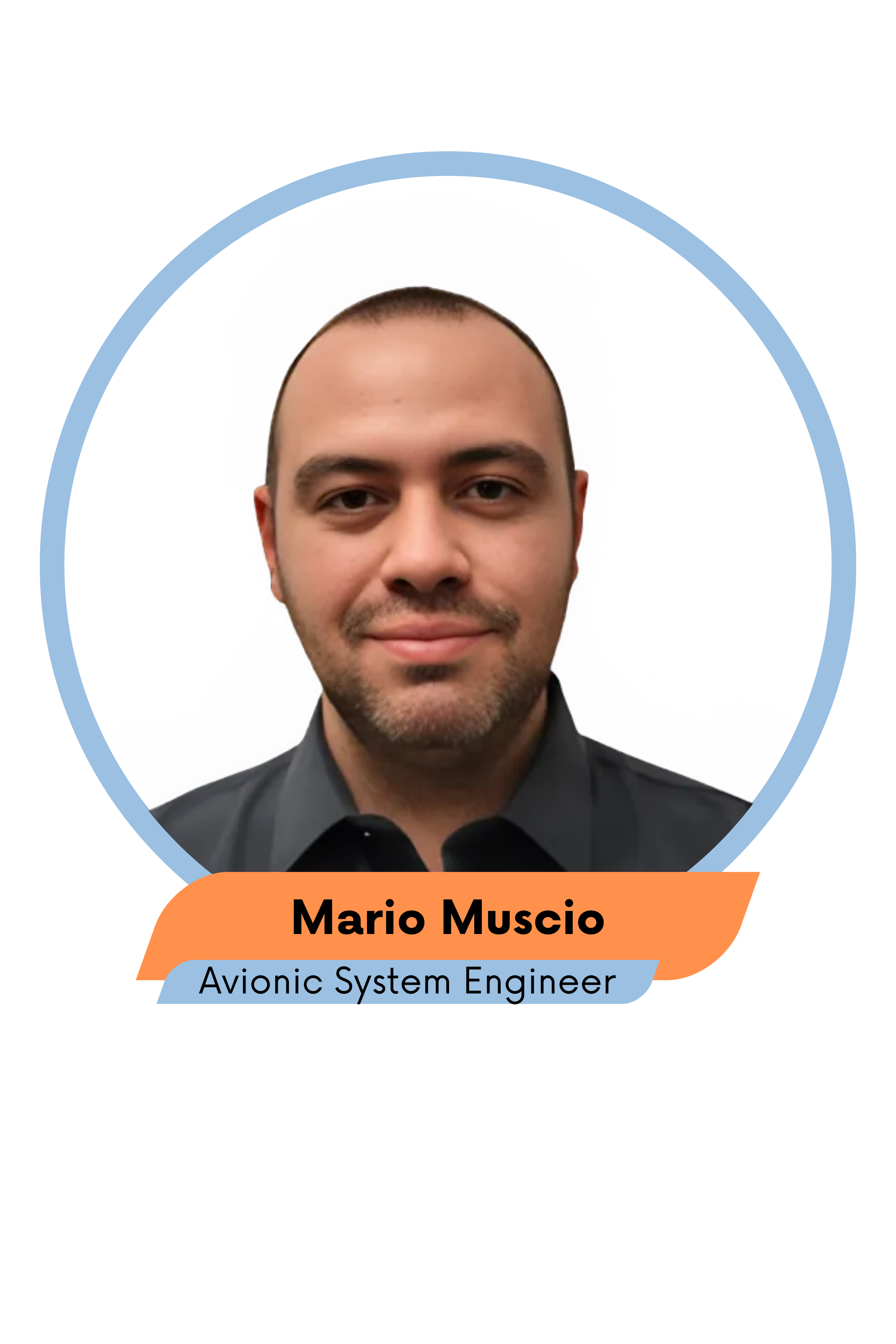Personal Information
- Name: Mario Muscio
- Position/Title: Avionic System Engineer
- Department: Avionic Systems (ASYS)
Professional Background
Briefly describe your professional background and area of expertise:
I hold a Bachelor’s degree in Computer Engineering from University of Naples “Federico II”, along with a Master’s degree in Artificial Intelligence & Robotics from University of Rome “La Sapienza”.
I have a background related to artificial intelligence specialized in image data analysis. My career started at Leonardo S.p.A. as a member of the Company Team of the EDA funded research program Enhanced RPAS Automation (ERA), by contributing to the software development and data analysis of automatic take-off and landing function. After that, I took the role of software Test Engineer in the frame of the C-27 J aircraft program. Currently, I’m involved in the EPIIC project acting as leader of the task dealing with use of Natural Language Processing technology in support of efficient voice interaction. My expertise includes natural language processing algorithms, neural networks and data analysis.
What inspired you to pursue a career in this related field, e.g., aviation etc?:
I like to always face new challenges that involve the application of AI in new fields. Avionics is one of them. Being able to combine new means of Human-Machine interactions based on AI in critical environments while respecting the values of safety, security and efficiency is a great challenge that could bring aviation field to a new technological level.
“ My work contributes to the EPIIC project’s overall goal of developing next-gen fighter aircraft technologies by studying AI-based method of Human-Machine interaction modality and by integrating it with the Virtual Assistant, thus providing multiple advantages to the pilot.”
Role in EPIIC
What is your role in the EPIIC project?
In the EPIIC project, I work in Work Package 9 acting as leader of the task studying Natural Language Processing as an enabler of an efficient use of voice and speech as Human-Machine Interaction modality. In the frame of Leonardo S.p.A. scope of contribution to the project, I also liaise with Work Package 4 to foster use of voice commands as a means to trigger the Virtual Assistant (VA) application.
Can you describe your main responsibilities and tasks?
My work includes:
- Manage and plan the activities related to the NLP application on a fighter cockpit environment.
- Define the technologies that can be involved in the software development of the NLP model based on machine learning.
- Contribute to the demonstration of NLP as part of the WP9 innovative interaction modalities.
- Liaise with WP4 activities.
How does your work contribute to the overall goals of the EPIIC project?
My work contributes to the EPIIC project’s overall goal of developing next-gen fighter aircraft technologies by studyng AI-based method of Human-Machine interaction modality and by integrating it with the Virtual Assistant, thus providing multiple advantages to the pilot.
“ A significant milestone was the creation of a training dataset containing a large number of possible avionic commands. This dataset was then used as knowledge base for NLP-based software.”
Project Insights
What do you find most exciting about working on the EPIIC project?
Working in the EPIIC project has given me the opportunity to work side by side with some of the most competitive and technologically advanced European Companies active in the civil and military aviation domain. Being part of a group aiming to bring innovation to the future of avionic is inspiring.
What has been the most challenging aspect of your work on this project?
The most challenging part of my work was to define how a new technology, such as Natural Language Processing, can become an integral part of a fighter cockpit as a means of interaction. Many challenges are to be faced like, enabling the use of military aviation or mission related terms, use of standardized phraseology pronounced by non-English native speakers, impact of operational conditions (use of mask, load factor, etc.) on speech features, just to mention a few.
Can you share a significant milestone or achievement your team has reached so far?
A significant milestone was the creation of a training dataset containing a large number of possible avionic commands. This dataset was then used as knowledge base for NLP-based software. A further achievement was that we were able, as a Team, to merge the knowledge and techniques from the different Partners into a single NLP-based model, providing a promising result in the demonstrations. Feedback from the pilots was very positive.
“ Working in the EPIIC project is giving me the opportunity to work side by side with some of the most competitive and technologically advanced European Companies active in the civil and military aviation domain. Being part of a group aiming to bring innovation to the future of avionic is inspiring.”
Personal Experience
What have you learned during your time working on EPIIC?
This experience helped me developing good communication and management skills, as well as broadening my knowledge in the field of AI software development, allowing me to work on complex ideas in a clear way and collaborate efficiently with European teams from different disciplines.
How has this project influenced your professional development?
Working on the EPIIC project has been incredibly motivating for my professional development. Collaborating with some of the most important Players in the aerospace industry in Europe and being part of a project that can bring combat aircraft into the future has opened new horizons for me, proving once again that AI applications can be truly limitless.
